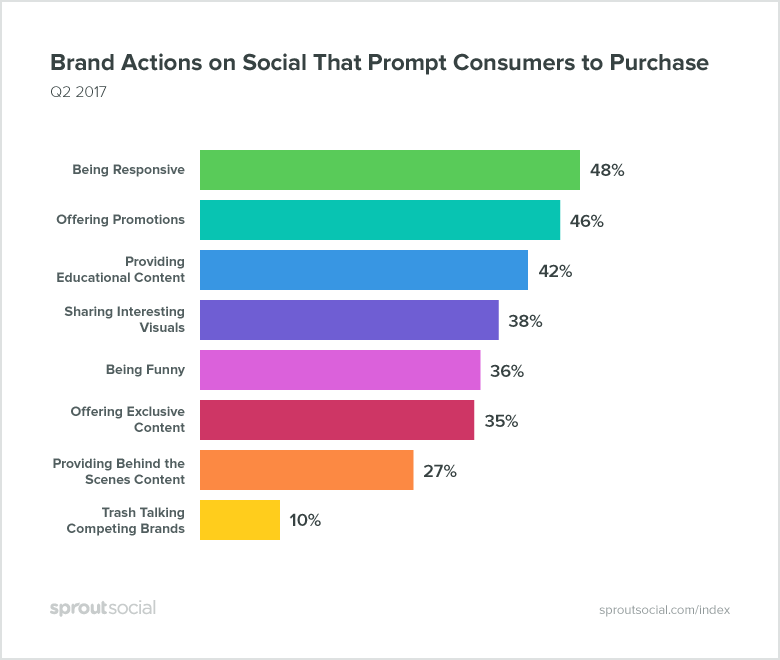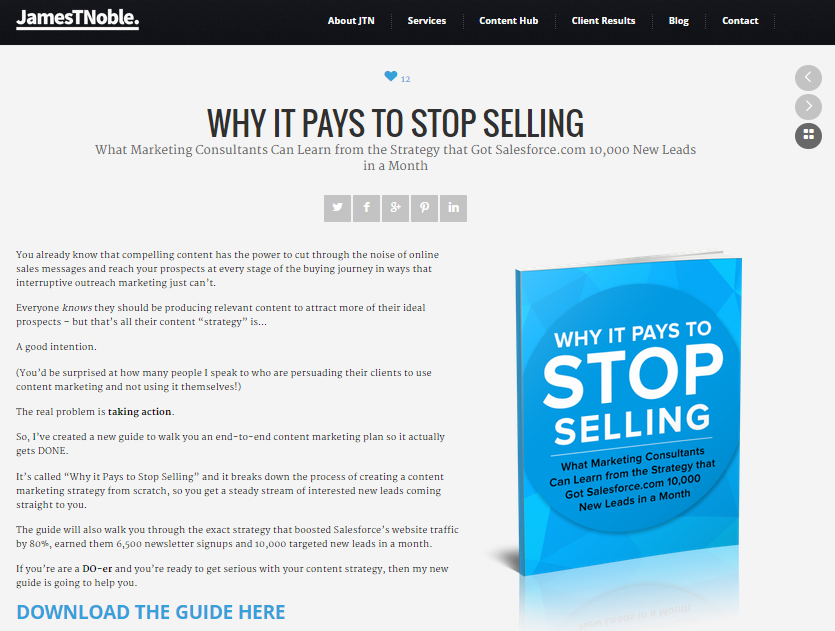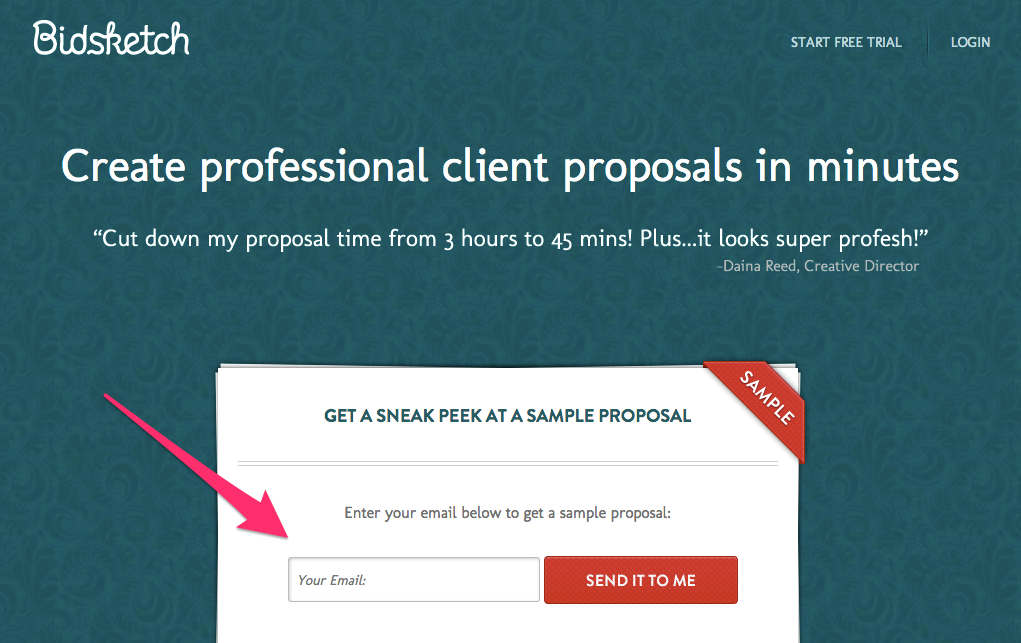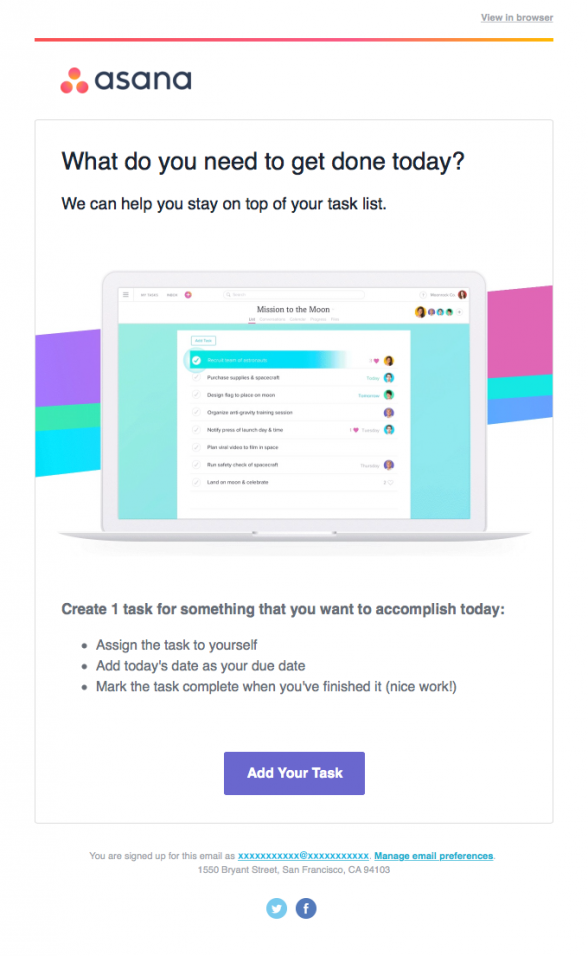How to Craft and Measure Profitable Funnel Conversions from Scratch
- February 10, 2021
- Uncategorized

Get traffic. Build your list. Convert prospects. These are the goals of your sales funnel.
To get the most out of your leads in each stage of their purchasing journey, you should have a funnel conversion strategy for all levels of the funnel. Measuring and testing the success of your strategy helps you drive additional improvements and lets you know what’s working.
If you have a website and a business, you can measure and create a sales funnel that converts, even if you’re starting from scratch.
Here’s how to do it.
The Basics of a Successful Sales Funnel
Before I dive into the specifics of building one, it’s important to define the key components of a funnel and how they should work together to make sales.
A sales funnel is simply a series of steps that you design to guide visitors toward a buying decision.
A very basic sales funnel might look something like this:

Funnels can help you do several things:
- Create awareness for your brand, product, or service
- Pique interest in what you have to offer
- Evoke a desire for purchase through education
- Help leads perform a desirable action
- Move leads through the funnel to the final purchase
In a profitable funnel, this process is repeatable and leads to the highest number of conversions possible (which, keep in mind, won’t be 100%).
Each stage of the funnel involves different strategies for this, however. Here’s a breakdown of what that looks like.
1. Top of the Funnel
The top of the funnel is the point where customers (or potential customers) are figuring out that you exist. It’s an exploratory stage.
The goal of this stage is to raise brand awareness, not to make a sale. This isn’t where you make a hard sell.
Exposure, influence, and engagement are the keywords.
Even at this step of the funnel, there is a breakdown in where potential leads might be:

The leads may be totally unaware of your business or product, or they may have heard of you, but they’ve never been to your website.
Each “place” in the brand-awareness pyramid requires different tactics for marketing (which we’ll get to). The goal of the top of the funnel is to make leads even more aware that you exist and that, most importantly, you have something that could benefit them.
2. Middle of the Funnel
Once there is awareness about your brand, there has to be interest. At this point, visitors are considering whether or not you have something of value to offer.
Your goal at the middle of the funnel is to strengthen the relationship with your leads so they move on to the final stage.
When you reach this stage, your leads are considering whether they should engage with you or walk away.

It isn’t a one-way street, however. This is also the stage where you’re gathering information about them.
When leads get to the middle of the funnel, targeting and segmenting become very important. You need to draw in your leads, and it’s easier to do that with data and personalized content.
You should focus your effort on content creation, targeted offers, and follow-up campaigns for specific buyer personas. Lead magnets, email courses, e-books, case studies, free trials — anything that captures an email address will be a benefit to your funnel conversion rate.
You can then track which method is getting you the most email addresses and make modifications to support your findings. For example, if most of your email leads are coming in through free trials, you can promote your free trial offering across your channels.
If you do this step correctly you’ll earn more leads, meaning you should have better funnel conversion rates when users reach the customer phase of the sales journey.
3. Bottom of the Funnel
This is the final decision-making stage in your sales funnel. Reminders, retargeting, and motivational offers work the best here.
It’s a mix of hard and soft selling, depending on the strategies you’ve used at the top and the middle of the funnel as well as the consumer’s buying behavior.
For example, you can determine which method has the highest funnel conversion rates for your business and lean into that. You can use an analytics tool like UberSuggest to identify which funnel conversion methods are working and which methods aren’t, and make necessary adjustments.
You could also run tests between two or more versions of the same method and see which works better. For instance, you could send reminders to leads that use different language and graphics and see which one performs best.

This can be an emotional stage for the buyer, so it’s important that your messages and sales strategies are equally emotional and targeted to specific needs.
Now that we’ve covered the basics, here are the five basic steps to crafting a healthy and profitable sales funnel.
Step 1: Create Lead-Capturing Landing Pages for Increased Funnel Conversions
You can create landing pages for visitors at any stage of the funnel. If you optimize and personalize them for users in each stage, your funnel conversion rate is likely to be higher, since a good landing page moves people through the funnel more successfully.
Ideally, your landing page should be higher converting than a purely informational page. Be sure to use Google Analytics or another analytics tool to determine which pages are highest converting.
Optimize Landing Pages for Top of the Funnel
The first place you want to start is the top of your funnel, especially if you’re creating a funnel from scratch.
Remember: the top of the funnel is all about traffic. To turn that traffic into something useful later on, you need a lead-generating landing page for people at the top of the funnel. The goal of your landing page is to provide information and a “test” or demo for the curious onlooker.
A homepage is a perfect landing page to hit people at the top of the funnel. They may find it through your PPC ads, in search results, or even through social media.
A landing page for top of the funnel could be your homepage if it looks something like this:

Even though this is a homepage, it has a lead-generating element on it (a “Try Kissmetrics” box) that they’ve designed to gather emails.
Ensure you measure the success of your home page as a landing page for leads at the top of the funnel.
Set KPIs and track them with tools, or test different versions against each other to see what performs best by running an A/B test. You can test elements like different content, images, and CTAs.
Your funnel conversion rates will grow when you make continuous improvements to your homepage as a landing page for top of funnel leads.
Optimize Landing Pages for Middle of the Funnel
Another example of a lead-generating landing page might look something like this:

You notice this example from Grasshopper has several lead-generating elements like social proof, a call-to-action (CTA) button, a list of features, and “how-to” text.
Users in the middle of the funnel are looking for more details about your products or services. A product page is probably the best choice of landing page for leads in this stage.
Again, you should rely on data (analytics and testing tools) to select and optimize your mid-funnel landing pages for increased funnel conversions.
It can be particularly helpful at this stage to run A/B tests to make improvements to text, UX, images, and CTAs. Keep in mind you should only test one feature at a time. Otherwise, you won’t be able to identify which features drove increases or decreases to funnel conversion rates.
You can also create landing pages that appeal to both top of funnel and middle of the funnel. Here’s an example:

They’ve designed the main text to capture leads at the top of the funnel, while the navigation gives access to pages that would most benefit those in the middle of the funnel who are curious about buying.
Optimize Pages for End of the Funnel
Your landing page for the end of the funnel is probably something like a pricing page.
In this pricing page example of a landing page, you’ll notice it’s geared towards those at the middle or bottom of the funnel:

It’s clear that the next action step here is more sales-oriented than simply getting to know the product.
Once again, you should optimize your pricing landing page to increase your funnel conversion rate. Think about how to present the pricing, how easy it is to purchase, how the page is laid out, etc. Keep testing and improving the page for the most sales success.
The key to a profitable sales funnel is a landing page that converts, so it’s the first thing you should think about building. You will most likely need several landing pages that appeal to buyers from all stages of the cycle.
Step 2: Drive Traffic to Your Landing Pages to Earn More Funnel Conversions
You’ve probably heard the age-old adage about a tree falling in the woods, right? Well, the same conundrum is true of the landing page as well.
A great landing page without any traffic won’t make a dent in your sales. However, traffic growth is one of the top challenges to inbound marketing.

This means you will need specific, proven strategies to drive traffic to your landing pages in order to move a potential customer on to the next stage of the funnel.
The best model for getting traffic depends on your goals, audience, and budget. Here are a few methods to consider:
1. Pay Per Click (PCC) Ads
PPC advertising is an increasingly popular choice among marketers as a way of generating traffic.

They’ve become popular for many reasons. For one, PPC ads can reach people on a variety of channels and networks.
You can create ads for Facebook or Twitter, for example, or focus on search engine PPC ads to drive organic search traffic.
On the other hand, PPC ads can be expensive. For those creating PPC ads on a budget, you have to consider the cost vs. ROI.
You have to ensure that the amount of effort and money you put into the ads will generate enough traffic to move a large number of leads through to the middle of your funnel.
If you aren’t sure how to calculate the ROI of your PPC campaign, then start here.
Don’t forget to track the success of your PPC ads to make necessary improvements or go a different route with your ad dollars. Successful PPC ads lead to funnel conversion increases. Unsuccessful PPC ads are a waste of money.
2. Social Media
Social media outreach is another great way to drive traffic at the beginning and middle of your sales funnel.
It’s a great tool because there is a lot of traffic on those channels already. All you have to do is tap into it.

It’s also a great tool for driving traffic because of its influential nature.
Even something as simple as answering a customer’s question on social media prompts 48% of consumers to make a purchase or convert in some way.

This means that it’s relatively easy for you to bring awareness to your brand while also moving someone from the awareness stage into the “tell me more” stage, ultimately earning you more funnel conversions.
3. Content Marketing
Social media isn’t the only way (or even the best way) to drive traffic to your site.
Content marketing — utilizing emails, blog content, case studies, etc. — is as effective, if not more effective, at driving traffic than social media alone.
In fact, 66% of marketers report using blogs and other web content as their primary social media content, too.
While content marketing can hit consumers at any stage of the cycle, it’s the perfect tool for influencing the middle of the funnel particularly.
It helps meet the education and research needs that someone in the middle of the funnel would need to finally convert. In order to get that conversion, you have to develop content that captures information.
Step 3: Develop Resources that Collect Email Addresses to Drive Funnel Conversions
After you’ve set up your landing pages, PPC ads, and social media accounts, the next step is to create content that captures attention.
It takes a lot of concentrated effort to move someone from the top of the funnel to the middle or from the middle to the bottom. You need to continue to target them with the content they’re looking for.
If they need more information about the benefits of your product, then you should send them to landing pages, e-books, or other resources that explain why your solution is the most effective solution.

Creating resources — also called lead magnets — does two things:
- It provides something valuable for the consumer.
- It gives you an email address that you can use for further marketing.
It’s easy for someone to download a free checklist or an e-book. Furthermore, if you can capture their email, you can send them more information that might persuade them to buy, thereby increasing your funnel conversion rates.
It’s a soft-sell strategy that works surprisingly well if you do it correctly. As previously mentioned, you should track what method is getting you the most emails and lean into that or make improvements to the methods that aren’t working.
1. Create a Variety of Lead Magnets
Lead magnets should first and foremost be something useful for your target audience. There needs to be a good reason for them to give you their email address.
Here’s an example of a simple checklist lead magnet:

You can also offer something like a free trial or sign-up:

Both work, depending on the audience. One will give you an email address, while the other will create an account and is, in a way, a mini-sale. Track how many emails come in through the methods you try and use this data to drive improvements, and eventually, your funnel conversion rates.
2. Make Your Lead Magnet Noticeable
Your lead magnet should be on your lead-generating landing pages or embedded into your content in a noticeable way.
In some cases, you can create a unique landing page for your magnet and then create PPC ads that link to it.

This creates several touchpoints for potential customers while also growing your traffic.
3. Make It Easy for People to Give Their Information
Getting someone onto your email list is a matter of value exchange. You’re giving them something and getting their email in return. You want this process to be as effortless as possible.
Unless they’re signing up for a free trial where they would need to give more information, you should only have a name box, an email box, and a button. That’s it.
You can A/B test to determine where the lead box should be located on your page, the colors you use, and the text. The better the lead box and easier it is to use, the better your chances of increasing your funnel conversion rates.

Once you have your leads’ email, you can move on to the real sales point: email campaigns.
Step 4: Set Up an Email Marketing Campaign to Get More Funnel Conversions
An email campaign is the next logical step in the sales funnel because it builds a relationship with a prospect over time.
This gives your leads the space they need to make a purchasing decision while also keeping them actively engaged in the process.
In terms of effectiveness, 87% of B2B marketers use email marketing to generate leads, and 31% say email marketing makes the biggest impact on their revenue.
Email campaigns can fill a wide range of purposes. They can introduce a prospect to the product or service you offer:

They can showcase more about your company:

They can recapture the attention of someone who has previously purchased from you:

The goal is to create a series of emails that continue to remind prospects that you still exist and that you’re ready to do business.
A typical email campaign might look like:
- Day 1: A “welcome” email that thanks the prospect for showing an interest in your product or service.
- Day 2: An email that offers another relevant lead magnet, typically a freebie like a checklist, e-book, or trial.
- Day 3: An email that includes a customer testimonial about your product or service.
- Day 4: An email that includes more stories or examples of how your product has helped people be successful and how they can use your product or service.
- Day 5: A final email that goes for the “hard sell” or next step in the purchase chain.
Marketers design these kinds of emails to move someone through the remainder of the funnel quickly. This will help close leads that might be on the fence or otherwise uncertain about how or why they should buy from you.
Take care to track which emails have the highest/lowest open rates and highest/lowest conversion rates so you can make tweaks if necessary.
Step 5: Track and Tweak Your Sales Funnel for Quicker and Better Funnel Conversions
Let’s do a quick refresher on the sales funnel steps so far:
- Create your landing pages
- Start your traffic-driving initiatives (PPC, social media, etc.)
- Create your lead magnets
- Set up an email marketing campaign
By the time you’ve created an email marketing campaign, you should start seeing some sales.
However, it will become critical for you to track each step to make sure there are no holes or leaks in your funnel, particularly in the middle of the funnel.

If traffic isn’t coming to your site, or that traffic isn’t turning into email addresses, or your sales numbers aren’t rising, there’s something wrong.
Watching your metrics, analytics, and sales numbers will be vital to the process.
For the most part, you should be able to track the success of your sales funnel with specific tools. Consider using things like:
- A CRM: a good CRM will allow you to track all new leads, open deals, and see current customers.
- Email tracking software: if you’re using an email service like Drip or MailChimp, you should be able to track leads from your desktop or integrate it with your CRM.
- Social media tools: tools like Buffer or Hootsuite can help you see your social media lead-generation progress.
Hootsuite Insights, for example, combines your analytics with more advanced social media monitoring so you can see which ads or content are working and what’s bombing.

Of course, something like Google Analytics works well, too.
At the end of the day, the tools don’t matter as much as the fact that you’re regularly checking your sales funnel for leaks.
This will let you see where you can make improvements that might significantly improve the quality of your leads and, eventually, your funnel conversions.
Conclusion
If all of this sounds like a lot of work, just know that the payout is worth it. The key to a profitable sales funnel is starting at the top and working your way down.
Creating sales funnels does take a lot of concentrated effort and monitoring to build correctly. If you take the time to do it, however, you’ll earn a nice bump in your revenue.
Focus on creating landing pages that really capture attention and then find ways of driving traffic to those pages. Lead magnets and email campaigns work great for both, and they’re also great ways to keep customers on the hook once they’ve purchased from you.
Just be sure to watch your metrics and pay attention. Even if you are doing this for the very first time, you’ll start seeing results if you stick with it.
If you’d rather have us tackle improvements to your funnel conversions, let us know!
How have you gone about implementing a conversion funnel in your business?
The post How to Craft and Measure Profitable Funnel Conversions from Scratch appeared first on Neil Patel.
About us and this blog
We are a digital marketing company with a focus on helping our customers achieve great results across several key areas.
Request a free quote
We offer professional SEO services that help websites increase their organic search score drastically in order to compete for the highest rankings even when it comes to highly competitive keywords.
Subscribe to our newsletter!
More from our blog
See all postsRecent Posts
- Web Hosting September 26, 2023
- Affiliate Management September 26, 2023
- Online Presence Analysis September 26, 2023

